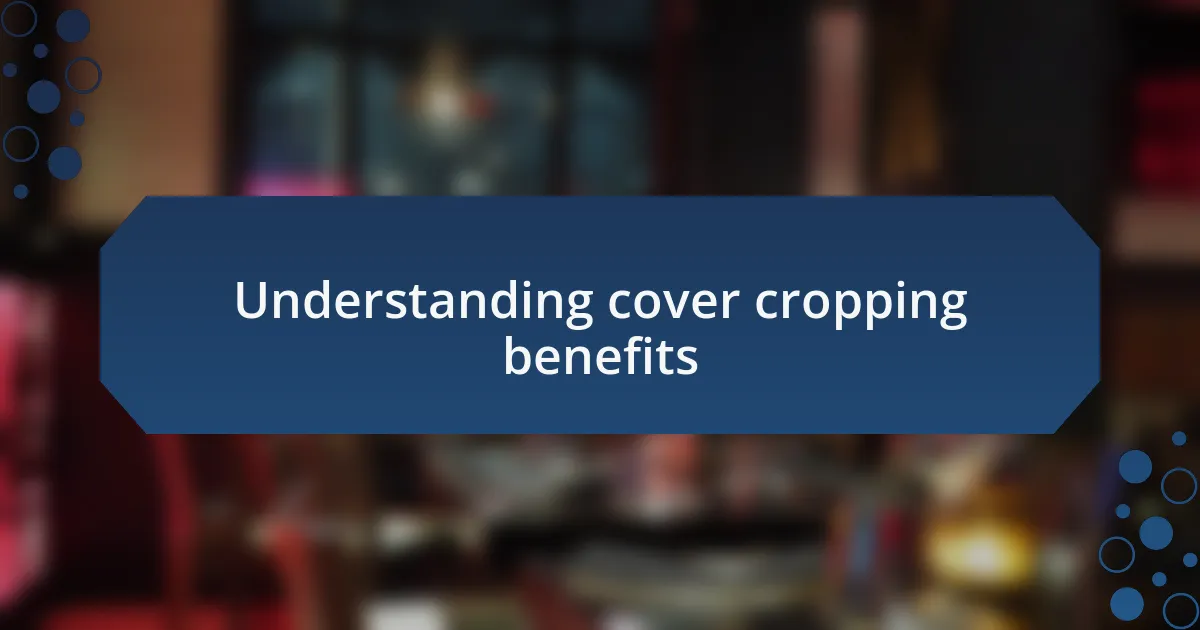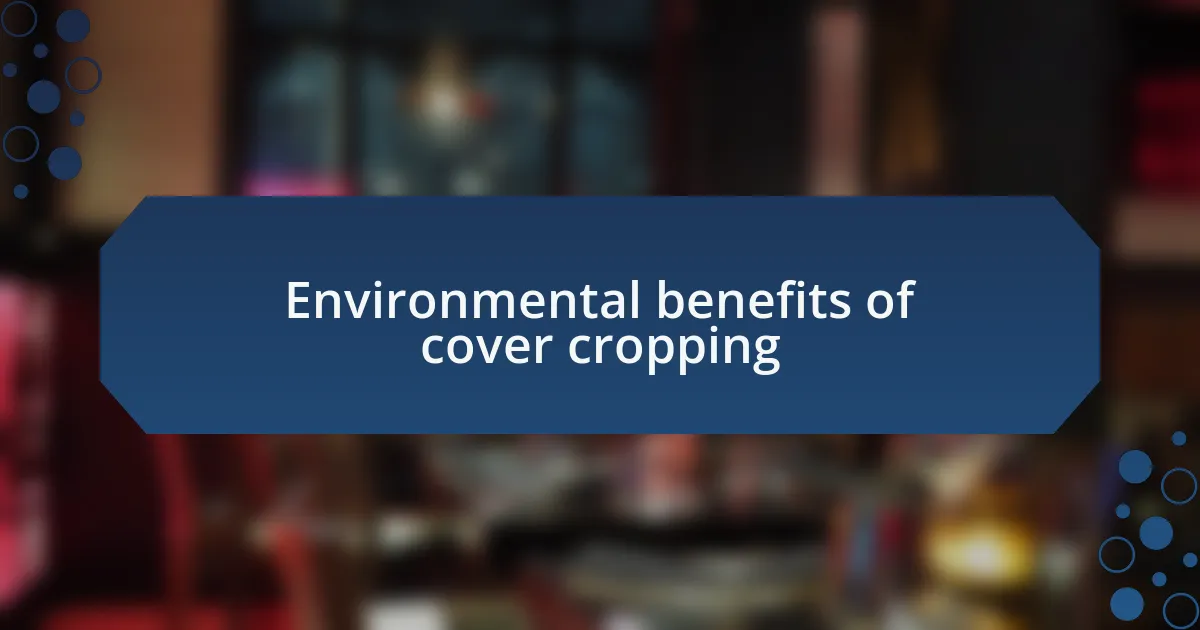Key takeaways:
- Cover cropping enhances soil health, preventing erosion and improving fertility, leading to better grape quality.
- Diverse cover crops contribute to biodiversity, fostering beneficial insects and aiding in natural pest control.
- Cover crops improve water conservation by enhancing soil structure and moisture retention.
- Implementing cover cropping practices supports sustainable agriculture and helps sequester carbon, contributing to climate change mitigation.

Understanding cover cropping benefits
Cover cropping offers a range of benefits that can significantly impact organic wine production. Personally, I have witnessed how these plants can enhance soil health, leading to better grape quality and more vibrant flavors in the wine. It often makes me wonder how many vineyard owners are missing out on nature’s simple solutions.
One of the most noteworthy advantages of cover cropping is its ability to prevent soil erosion. I recall visiting a vineyard where lush cover crops were interspersed among the rows of vines. The farmer shared how these crops not only preserved the topsoil during heavy rains but also created a habitat for beneficial insects. Isn’t it fascinating how these plants can turn the tide in protecting both the land and its ecosystem?
Additionally, cover crops play a crucial role in improving soil fertility. By fixing nitrogen and adding organic matter, they create a nutrient-rich environment for vines to thrive. I remember a particularly dry season when a vineyard I worked with implemented a cover cropping strategy. The difference in soil moisture retention was incredible. It got me thinking: what if more vineyards adopted this practice? The potential benefits for the entire winemaking community could be staggering.

Environmental benefits of cover cropping
Cover cropping significantly contributes to biodiversity on vineyards. In my experience, when I’ve seen diverse cover crops flourish, it was like walking into a vibrant ecosystem alive with various insects and birds. Isn’t it intriguing that these plants not only support soil health but also attract pollinators and other beneficial species that can naturally balance pest populations?
Moreover, I’ve noticed how cover crops can play a vital role in water conservation. One vineyard I visited had experimented with deep-rooted cover crops, which helped to break up compacted soil layers. This led to increased water infiltration and retention, especially during periods of drought. Have you ever thought about how simple plants can transform a vineyard’s relationship with water resources?
I also find it fascinating that cover crops can sequester carbon from the atmosphere. During a discussion with a viticulturist, he emphasized how planting specific cover crops not only benefited the soil but also contributed to reducing greenhouse gas emissions. It made me reflect on the importance of sustainable practices in our fight against climate change. How many of us realize that each planting decision can genuinely impact our environment?

Personal experiences with cover crops
When I first planted cover crops in my vineyard, I wasn’t entirely sure what to expect. The sight of lush greens pushing through the earth brought an unexpected sense of hope and excitement. It felt as if I was witnessing my vineyard rejuvenating, and it sparked a deep connection to the land.
One memorable experience was during a heavy rainstorm; I noticed that the cover crops helped minimize erosion significantly. Watching the water flow gently over the surface instead of washing away precious soil was a relief. It made me ponder, how many other farmers miss this incredible benefit that nature provides when we simply allow it to thrive?
Participating in a local farming workshop opened my eyes to the community benefits of cover cropping. Listening to fellow growers share their successes and challenges felt like being part of an ongoing dialogue. It was inspiring to see that we are all in this together, learning from each other’s stories and experiences to improve our practices. How can we harness that collective wisdom to enhance our vineyards and, in turn, the larger ecosystem?